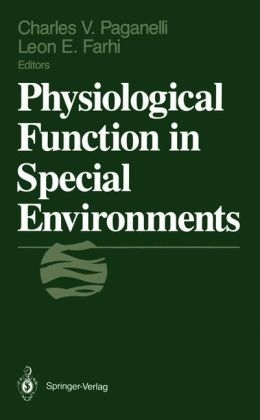
Physiological Function in Special Environments
Springer-Verlag New York Inc.
978-0-387-96833-9 (ISBN)
- Titel ist leider vergriffen;
keine Neuauflage - Artikel merken
I Physiology of Adaptation to Altitude.- 1. Structure and Function of Carotid Bodies at High Altitude.- 2. Where Does [H+] Fit in the Scheme of Ventilatory Acclimatization to Hypoxia?.- 3. Adventitial and Medial Proliferation of Lung Vessels in Neonatal Pulmonary Hypertension: The Calf at High Altitude.- 4. Muscle Function Impairment in Humans Acclimatized to Chronic Hypoxia.- II Physiology of Diving and Exposure to Elevated Pressure.- 5. Resistance and Inertance When Breathing Dense Gas.- 6. Diffusive Gas Mixing in the Lungs: A Possible Factor Limiting Alveolar Gas Exchange at Depth.- 7. Water Exchange in Hyperbaria.- 8. On the Use of a Bubble Formation Model to Calculate Nitrogen and Helium Diving Tables.- 9. Arterial Oxygen Tensions and Hemoglobin Concentrations of the Free Diving Antarctic Weddell Seal.- III Physiology of Exposure to Altered G-Force.- 10. Human Physiological Limitations to G in High-Performance Aircraft.- 11. Effects of Weightlessness on Human Fluid and Electrolyte Physiology.- IV Comparative Physiology.- 12. Aquatic Life and the Transition to Terrestrial Life.- 13. Gas-Exchange Efficiency of Fish Gills and Bird Lungs.- 14. Alterations in the Bimodal Gas Exchange of the African Catfish Clarias lazera.- 15. Homeostasis: Embracing Negative Feedback Enhanced and Sustained by Positive Feedback.- 16. Time, Energy, and Body Size.
| Verlagsort | New York, NY |
|---|---|
| Sprache | englisch |
| Themenwelt | Medizin / Pharmazie ► Medizinische Fachgebiete ► Sportmedizin |
| Studium ► 1. Studienabschnitt (Vorklinik) ► Physiologie | |
| Naturwissenschaften ► Biologie ► Botanik | |
| Naturwissenschaften ► Biologie ► Genetik / Molekularbiologie | |
| Naturwissenschaften ► Biologie ► Humanbiologie | |
| Naturwissenschaften ► Biologie ► Ökologie / Naturschutz | |
| Naturwissenschaften ► Biologie ► Zellbiologie | |
| Naturwissenschaften ► Biologie ► Zoologie | |
| ISBN-10 | 0-387-96833-4 / 0387968334 |
| ISBN-13 | 978-0-387-96833-9 / 9780387968339 |
| Zustand | Neuware |
| Haben Sie eine Frage zum Produkt? |
aus dem Bereich


